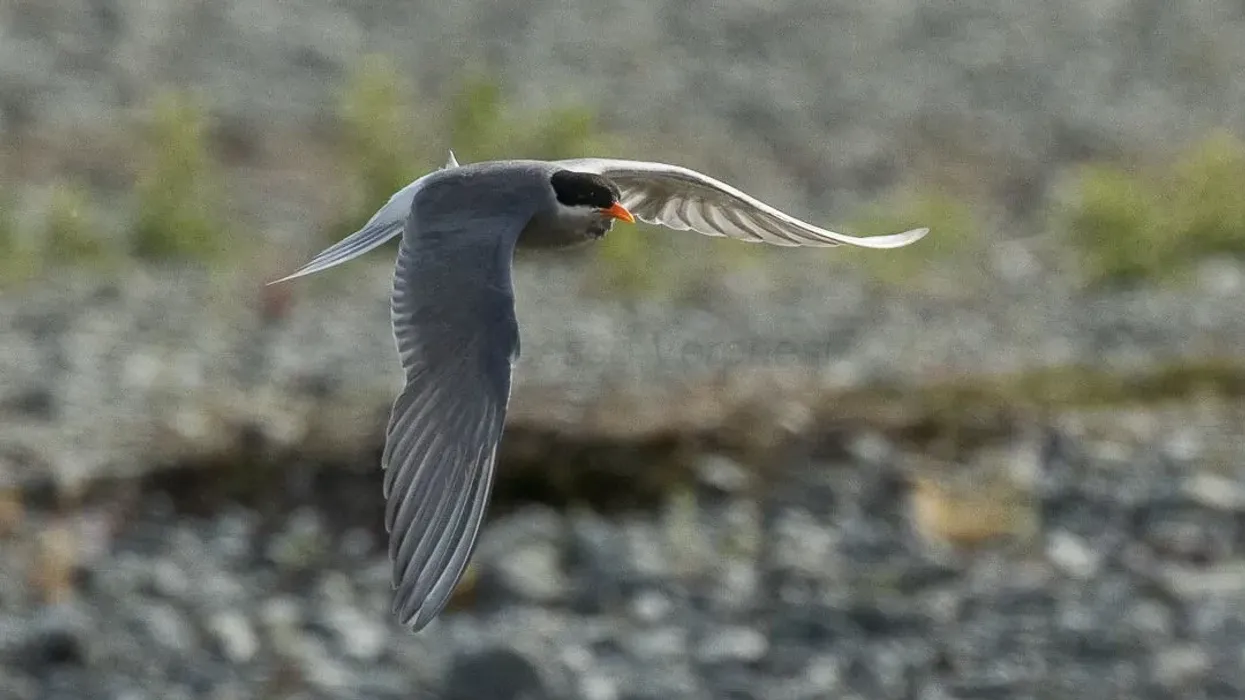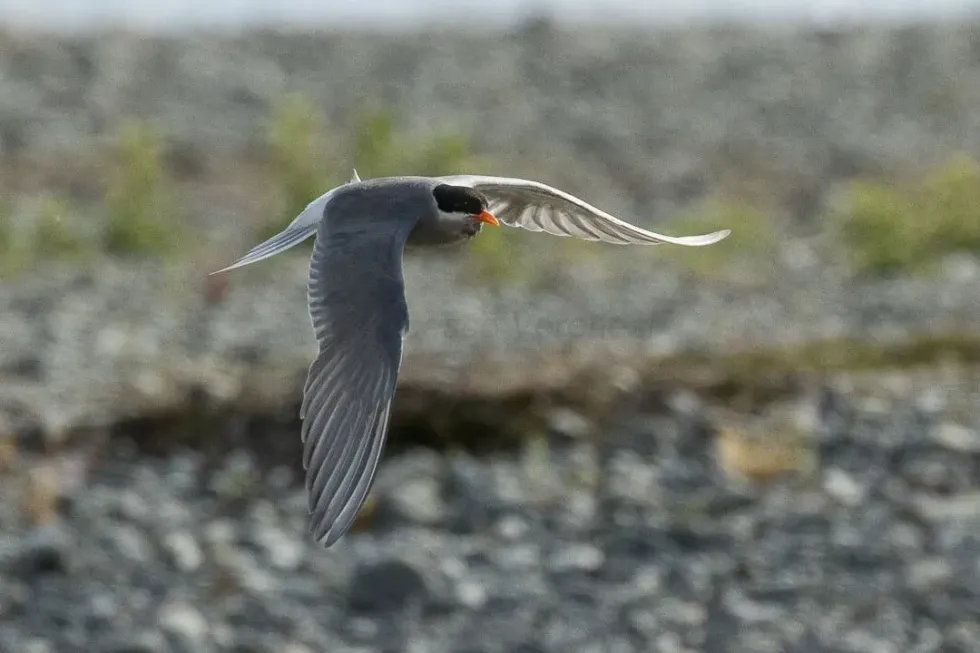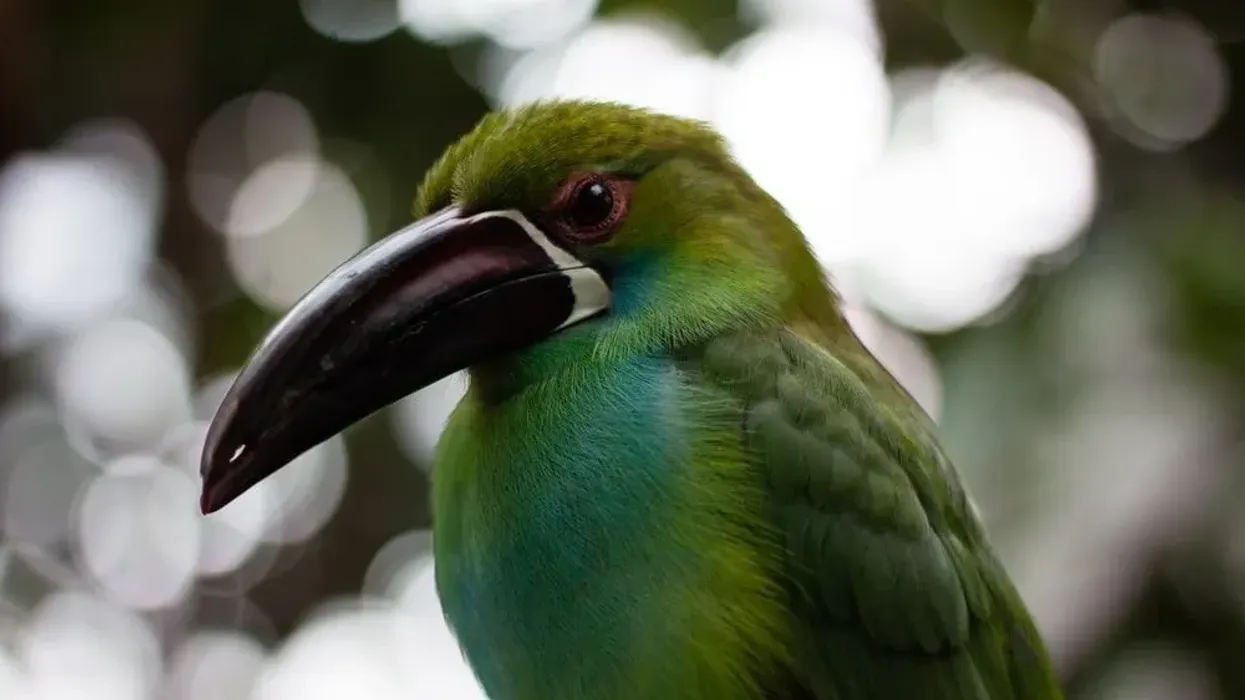Terns are members of the Sternidae family. They are distinguished from gulls by a fork-like tail, which has given rise to the common term 'sea swallow.' The black-fronted tern (Chlidonias albostriatus) is found solely in New Zealand.
It is the only tern that nests exclusively inland. They are tiny, measuring 11.4 in (29 cm) in length and weighing 2.8 oz (80 g). They have a white body with gray wings, orange bill, white cheek bands, a red beak, and a white bill.
Their rump is white, and their forked tail is a pale gray. From September to January, they reproduce by depositing one to four black eggs with brown blotches in a shallow scrape on the shingle.
Both sexes incubate the eggs, as do all terns in New Zealand. At 30 days, the young fledge. They disperse to coastal areas after breeding.
Read on to find out more. You might also like to read our Palm Warbler and Blue Jay facts.
Black-Fronted Tern Interesting Facts
What type of animal is a black-fronted tern?
The black-fronted tern is a bird.
What class of animal does a black-fronted tern belong to?
It comes under the class Aves.
How many black-fronted terns are there in the world?
The global population is tiny, with an estimated 5,000-10,000 individuals. Many rivers have just a few breeding populations, with only a few rivers hosting more than half of the breeding population. Since European colonization, the breeding number has fallen substantially and continues to do so. They are endemic to New Zealand.
Where does a black-fronted tern live?
The black-fronted tern range/habitat is in the South Island's braided river, and breeding is done exclusively in the braided rivers of the eastern and southern South Island.
What is a black-fronted tern's habitat?
The black-fronted tern habitat is in riverbeds and migrates to coastal estuaries, fields, lagoons, and harbors after they nest (where they roost). It forages in coastal waters up to 164 ft (50 m) from the beach, as well as on nearby farms.
It is found in New Zealand's interior South Island. This species used to breed in North Island, but it is now just a post-breeding visitor. It breeds in the east and south of the South Island, from Marlborough to Southland, and is endemic to New Zealand.
Who do black-fronted terns live with?
They typically nest in tiny colonies of two to 50 pairs, with some colonies including more than 250 pairs. After the breeding season, it migrates to estuaries, lagoons, fields, and harbors.
How long does a black-fronted tern live?
The lifespan of these riverbed birds is not known.
How do they reproduce?
They breed only on the eastern South Island's braided rivers. The breeding season lasts from October through December, although it might possibly stretch into January.
It breeds in colonies, with nests, spaced 16.4-65.6 ft (5-20 m) apart. It is a shallow shingle scrape that is frequently bordered with twigs. It is put near rocks and river stones, or at the base of a forest.
The female lays two eggs that are dark olive in color with black markings. During the 21-25 day incubation period, both adults share the incubation.
The chicks leave the nests within one to three days of hatching and migrate away from the colony. They will be able to fly in one month. They are fed by both parents and continue to rely on adults for food for at least two weeks after they have fledged.
Adults guard them fiercely from invaders. In non-breeding plumage, the distinctive black cap recedes from the beak and becomes flecked with white.
What is their conservation status?
This tern has a tiny population that has recently seen very fast population declines at certain wintering and breeding locations, which are expected to continue in the future due to ongoing threats. As a result, it is listed as Endangered status and needs conservation.
Black-Fronted Tern Fun Facts
What do black-fronted terns look like?
A blackhead from the brow to the neck, orange bill, and a thin white cheek stripe describes a black-fronted tern appearance. The plumage of the body is a light blue-gray color. The underparts have a light gray color.
The rump, upper tail, and undertail-coverts are all white, but the tail is pale gray with a darker tip and is forked slightly. Black-fronted tern feathers of the upper wing are deeper gray, and the outer primary has a dark leading edge and a white shaft.
The bill is short and yellow-orange, with a strong downward curve at the tip.
The eyes are completely black. Yellow-orange legs and webbed feet. Both sexes are comparable.
The crown and nape of the juvenile are streaked or speckled black. The back feathers have buff edges that provide a scaled appearance. The breast and belly are gray, but the neck, like the undertail-coverts, is white.
The immature breed is similar to a non-breeding adult. It has a mottled gray body and brownish wings and legs. The top of the head is gray with black mottling.

How cute are they?
They can be considered cute.
How do they communicate?
It defends its colony by diving and hitting intruders on the head with its feet while calling loudly. Elegant aerial courtship displays like 'high-flight' and 'fish-flight' are among the displays.
Following male-female courting feeding, both sexes take off and soar high in the air, alternating with glides on stiff wings. The black-fronted tern call is a repeated 'ki-ki-ki-kew' spoken in flight.
If there are other foragers around, this call is also employed while feeding. They are typically silent away from the colonies and at roost, but the colonies become loud when many birds disagree.
How big is a black-fronted tern?
They are tiny, measuring about 11.41 in (29 cm) in length. The black-fronted tern wingspan can vary.
How fast can a black-fronted tern fly?
When hawking insects over the fields, this species has a unique floating flying. When hunting and eating, it flies like a butterfly, dipping and rising and flickering across the water as it searches for food.
How much does a black-fronted tern weigh?
It weighs around 0.19-0.21 lb (86-95.2 g).
What are the male and female names of the species?
They are called black-fronted tern male and black-fronted tern female.
What would you call a baby black-fronted tern?
We call them chicks. Many eggs and chicks are lost. Riverbed birds have adapted to floods and can nest again if eggs or chicks are lost. Birds with good locations of the nest are more likely to successfully rear chicks.
What do they eat?
This bird forages for the majority of its food in braided rivers where nesting colonies have established themselves. Often known as plowboys or the plowman's buddy, they feed on grubs, insects, beetles, worms, and, on rare occasions, tiny sand lizards and silkworms from the freshly excavated ground.
They feed on mayflies, stoneflies, skinks, and tiny fish in rivers and streams.
Its feed also includes zooplankton and crustaceans throughout the winter. During the mating season, they feed in flocks, although mostly on land.
They are highly busy near rivers, tapping the surface with their bills to catch the food. They often soar over the streams to catch flying insects. Plunge-diving for fish feeding is done.
Are they poisonous?
No, they're not poisonous species of birds. Terns frequently abandon their nests when people disturb them.
Would they make a good pet?
It is not a good idea to pet these birds as they're endangered birds.
Did you know...
The tarapiroe species has a unique black 'cap' and orange beak while it breeds. Outside of the breeding season, in non-breeding plumage, the distinctive black cap fades to a mottled gray, and the bill develops a black tip. A black patch forms around the eyes and ears as well oh the birds.
Do black-fronted terns migrate?
Birds disperse to inland coastal areas after breeding season (in winter), sleeping in protected harbors, estuaries, and lagoons, and feeding mostly offshore but also on near-coastal farms. A limited number of birds migrate to the North Island sea in the winter, mostly around Wellington, Wairarapa, and Hawke's Bay, but also as far north as Kaipara Harbor.
These birds were formerly common in the Bay of Plenty, but are now uncommon due to various threats.
Are black-fronted terns endangered?
These birds are threatened for a number of reasons, including habitat loss and rivers' recreation. The primary threat, however, is posed by imported predators such as cats, rats, stoats, and harrier hawks.
Furthermore, their nests are subject to floods. Conservation efforts such as pest control and weed management have had mixed results.
There are 2,500-9,999 adult birds, with a recent, fast drop in numbers. These birds are now listed under Endangered status.
Some birds reside along the South Island's braided rivers, where they, like others, face threats from hydropower construction, predators, and invasive plants that suffocate birds' nest sites. The upper Waitaki River watershed, where a recovery initiative was begun in 1991 to stem the birds' decline, is home to around 60% of New Zealand's 5,000 birds.
Here at Kidadl, we have carefully created lots of interesting family-friendly animal facts for everyone to discover! For more relatable content, check out these swallow-tailed kite facts and white hawk facts for kids.
You can even occupy yourself at home by coloring in one of our free printable black tern coloring pages.










